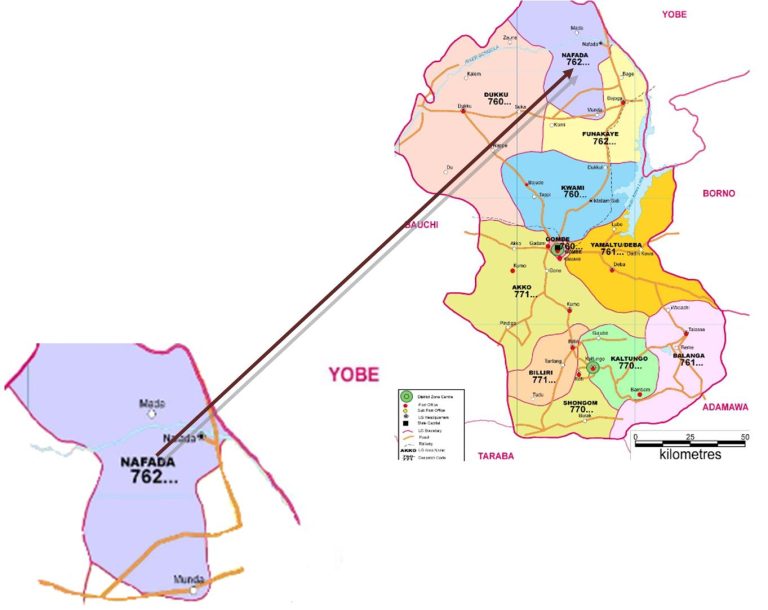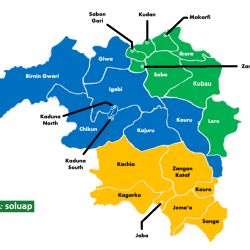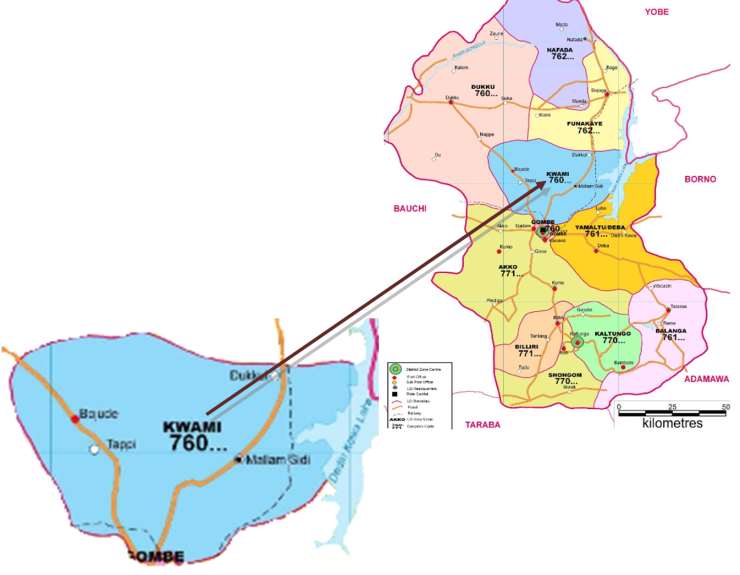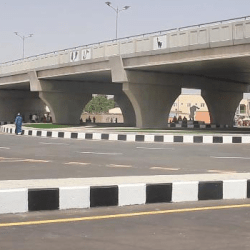The Nine (9) Historical Gates of Bauchi
Residents of Bauchi, Bauchi State, are familiar with the existence of gates across the city such as Kofar Wunti, Kofar Jahun and even Kofar Gombe (Wambai).



However, only a few residents know that these gates used to be small doors through which only persons approved by the emir were permitted to enter the city in those days.
There were nine of such doors built by the Bauchi Emirate.
The nine doors are Kofar lnkil, Kofar Dumi, Kofar Wase, Kofar Jahun, Kofar Nassarawo, Kofar Wunti, Kofar Ran, Kofar Tirwun and Kofar Wambai.
Wakilin Tahiri (Chief Historian) of the emirate, Alhaji Ado Dan Rimi, said Bauchi was established as a result of the Sokoto Jihad of 1804 by Mallam Yakubu, the first emir: “Mallam Yakubu was a flag bearer of Sheik Usman Dan Fodio. He covered most of the southern part of the caliphate during the Jihad and had wide land coverage unlike most emirs who concentrated in their emirates.
In 1807, Yakubu, after capturing most of the areas was invited to Sokoto to meet with Dan Fodio to seek advice on the location he would start his town: “Bauchi was regarded as a land of unity in diversity because of its combination of so many ethnic groups all living in the same place.
The name Bauchi was coined owing to the inability of the different ethnic groups to understand the other person’s language.
On Yakubu’s arrival in Sokoto, Dan Fodio asked him where he was interested in starting his town. Yakubu suggested Wase, Babah, or Zaranda. The Sultan told him that if he settled in any of these areas, his people would be rich without faith and Islam would not be cherished.
Mallam Yakubu then suggested Inkil, again, the Sultan told him that if he established his kingdom in Inkil his followers would become singers instead of promoters of Islam. At that point, Yakubu sought the advice of Dan Fodio. Dan Fodio advised Yakubu to consider a part of the Warinje Hill area into his town but warned that the place was full of snakes. The Sultan said he would pray to God for protection for Yakubu and his people.
The surface of the earth in the Warinje Hill was hard but when the people sowed grain, the harvest was bountiful as those that sowed in sandy and fertile area. That is why till date there is a proverb in Hausa that says, ‘Bauchi Naman Kai ga kise ga tare,’ meaning ‘the flesh in the head is close to the bone but full of flesh and fat.’ That is even though the people hate sowing on hard surface, yet the yield is good.
On his return, Yakubu first went to Inkil, located a hill there in a virgin land with some rocks and started building his town where he first built a mosque, then a prison yard and the kingmakers house before building the town in present day Bauchi.
Between 1807 and 1812, Yakubu built the wall of the city of Bauchi first with four gates namely Kofar Inkil (or Iddi), Kofar Tirwun, Kofar Wase and Kofar Wunti, which were later increased to nine due to expansion.
Few years after Bauchi was founded, it developed into a cosmopolitan city with different ethnic groups such as Jarawa, Nupe, Hausa, Gerawa and Arabs.
To meet the demand for space, Yakubu expanded Bauchi by building five more gates namely, Kofar Jahun, Kofar Ran, Kofar Nassarawo, Kofar and Kofar Dumi. The emir built a wall surrounding the city and movement in and out of Bauchi was through any of the nine doors. Movement was thus restricted. The gates were usually closed by metal doors.
Some of the metal doors can be seen in the National Museums in Lagos and Jos. Two rooms were attached to each of the nine gates – one for Ajiya tax or revenue collector, and the other for guests who arrived late and usually slept there for protection.
The door (gate) was always closed with two male keepers manning them. Anytime a visitor, guest or strangers wanted to enter the city, the keepers asked him his mission and then informed his superior who in turned informed the emir.
Kofar Inkil
Also called Kofar Eid, Kofar Inkil was built to meet the demand of the people of Inkil, the first capital city of the emirate. Before the door was built, there were two Eid prayer grounds – one at Inkil and the other at Ran but later merged to form the popular Eid prayer ground behind the palace.
Kofar Dumi
This gate was built to meet the demands of the people of Dumi. One of Yakubu’s disciples named Abdul Dumi who later became his Wambai, adviser, was from Dumi. He escorted the first emir to identify the area the town would be located. The emir opened the gate as a mark or respect for Dumi who was sent to Wase for Jihad. The gate was used by Dumi to come to Bauchi every Friday to discuss state matters with the emir after the Jummat prayers.
Kofar Jahun
It was built for the Fulani of Jahun who resided outside the town since the Jihad. One of them, Farooq, from Bayak, was appointed as Galadima by Yakubu, he usually used the gate to see the emir. The British colonialists led by Dr. William Wallace, arrived Bauchi through Jahun gate in 1902.
Kofar Nasarawo now called Nasarawa
This was built for in and out movement of Mallam Nassarawo, a cleric who lived outside the town. The emir at the height of the Jihad usually spent three days in Nassarawo’s house praying for victory.
Kofar Wunti
This was built for the Sarkin Yaki or Commanding Officer of the Emir named Mohammed Kusu. He was from the Wuntawa clan among the Fulani ethnic groups.
Kofar Ran
Ran was known for being a settlement, which produced Islamic scholars from Bauchi. The gate was built to integrate them into the town.
Kofar Tirwun
This is the town Yakubu was said to have originated from so he built the gate as a mark of respect to the people of Tirwun.
Kofar Wambai
After the expansion, he relocated the Wambai elsewhere where he built a house for him and the gate as his entrance in and out of the palace.
The nine gates were fixed to the mud wall, three metres both inside and outside, surrounding the city. The gates have been redesigned to meet the demands of the modern age.
In those days camels used to pass through, but now the gates have been redesigned to accommodate vehicular movements, especially big ones like trailers or tankers.
Though the gates have been redesigned, the same cannot be said of what used to be the wall built by Yakubu. With urbanisation, what used to be the wall was overtaken by residential houses, especially around the Jahun, Nassarawo and Wase gates, with the remains of the red mud wall still standing.
But the gates stand as a reminder of life after the Jihad when movements were restricted. It is no longer so as Kofar Wunti, Kofar Wambai, now Gombe Road Gate and even Kofar Ran are used by motorists and travellers going to the North East.
Bauchi whose current emir, Dr. Rilwanu Suleiman Adamu, is the 11th ruler, has grown since the time of Yakubu to become the capital of Bauchi State. The emir used to exact influence within and outside the emirate. With coming of colonialism and independence, his power has since been confined to his domain.
Constitutionally, most of such powers have been conferred on administrators, civil servants and elected officials. And so the practice of restriction of movements in and out of the gates is no longer possible.
The gates are now more or less mere relics still standing to beautify the city and a reminder of the rich history of Bauchi Emirate and a glimpse into the past.
Reference: bauchistate.gov.ng/directory/the-nine9-historical-gates-of-bauchi/




